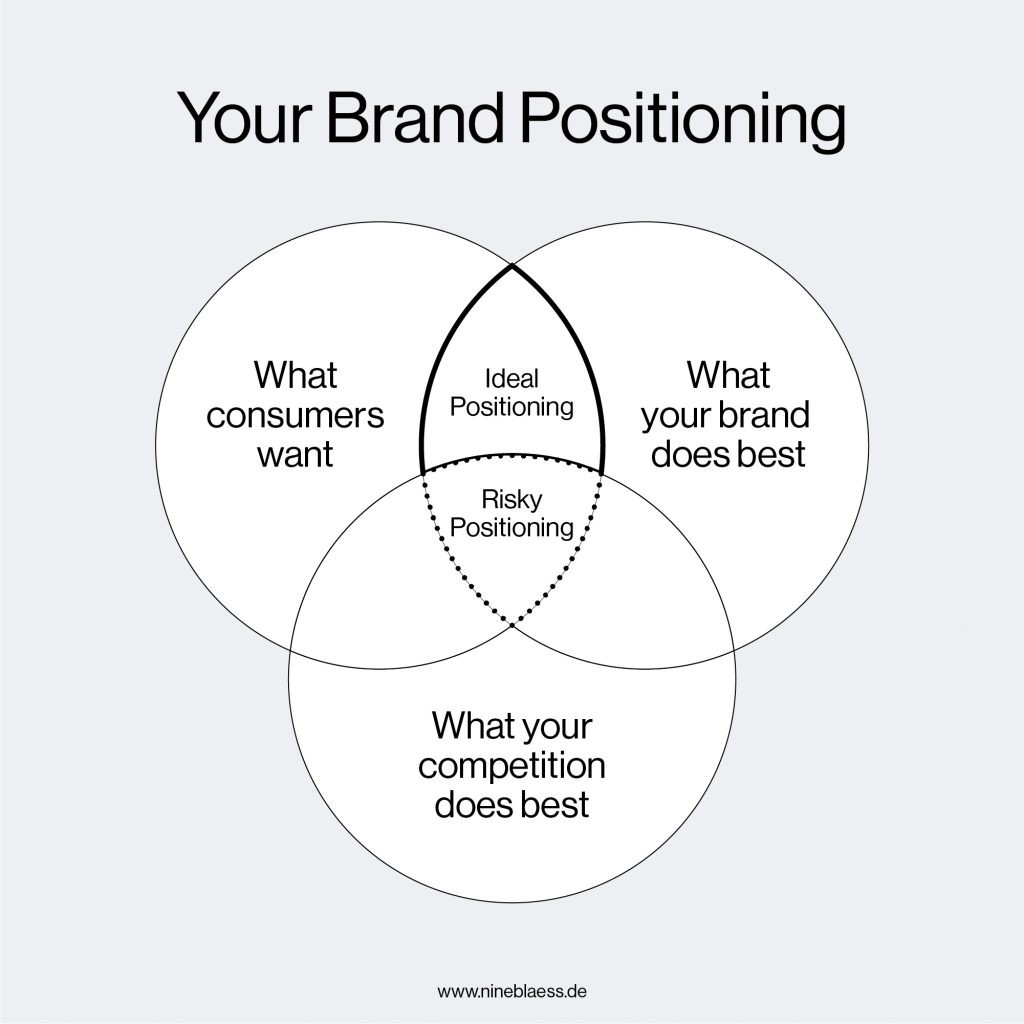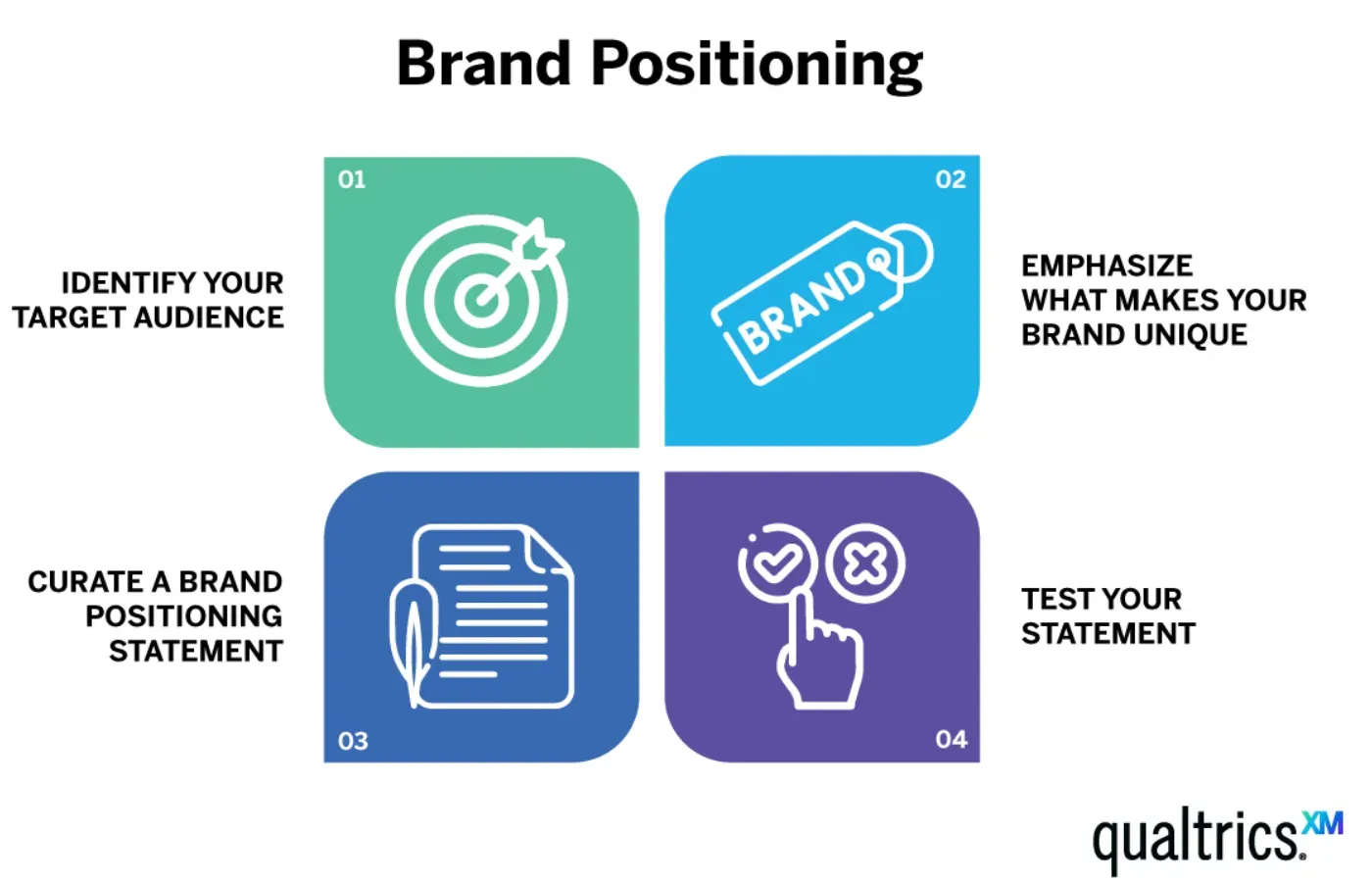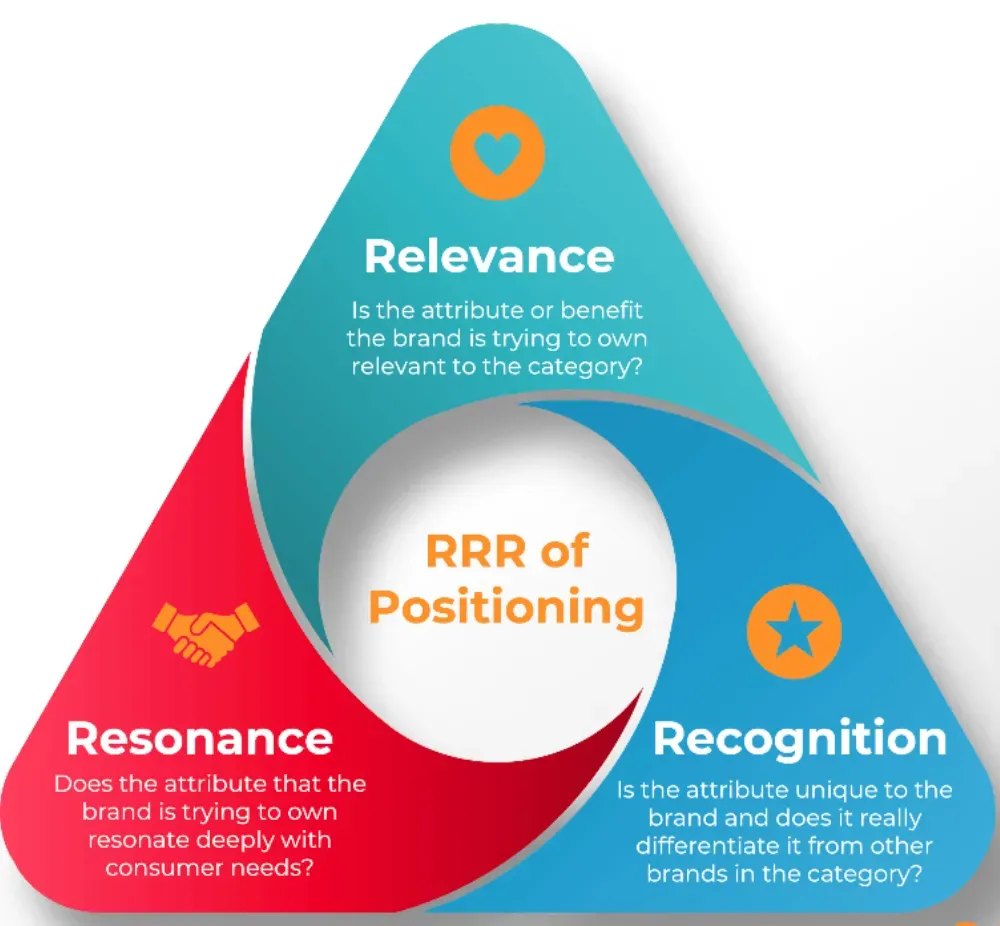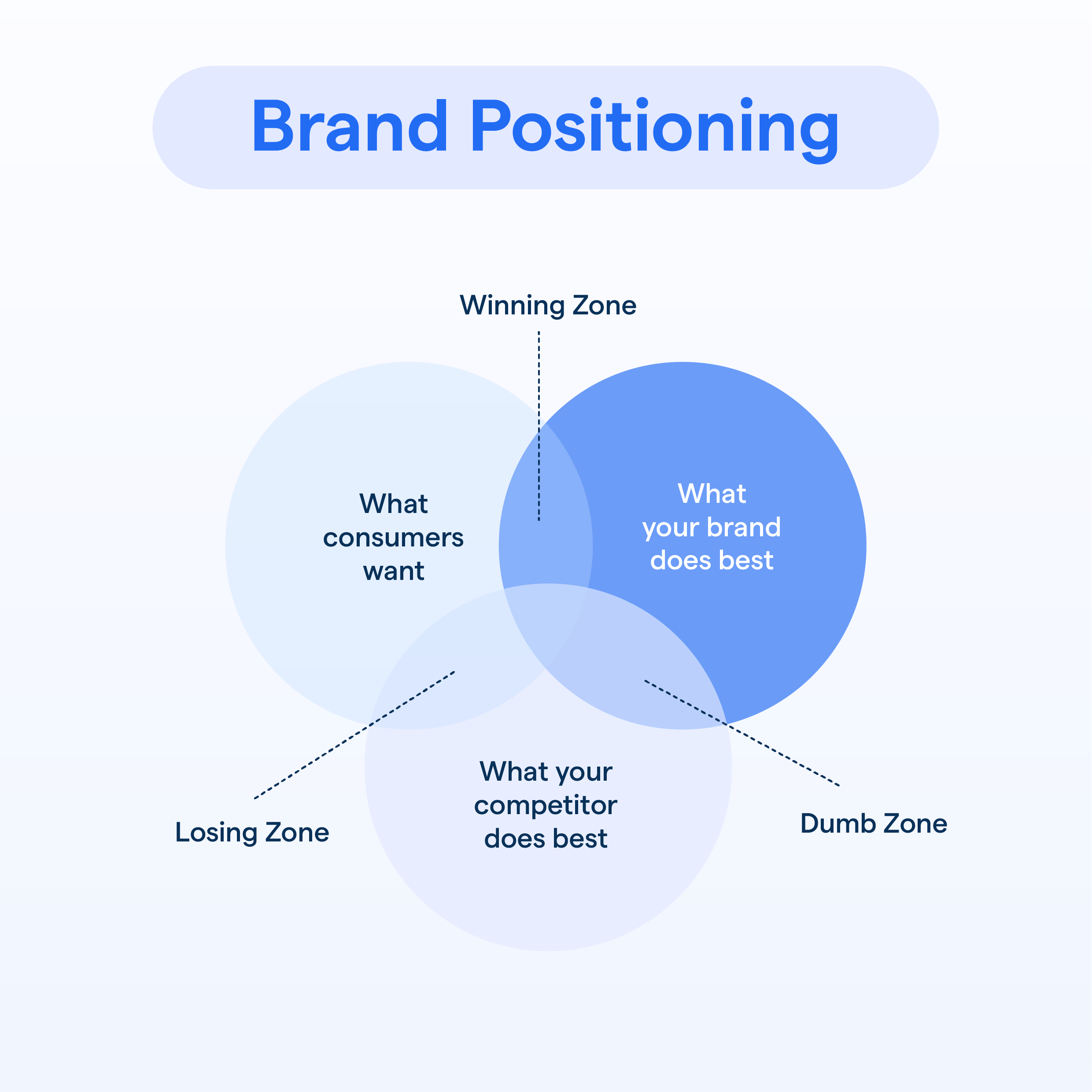What is Brand Positioning?
Brand positioning is a marketing strategy that aims to create a unique image, value proposition, and identity for a brand in the consumer's mind.
Importance
It assists businesses to differentiate themselves from their competitors and establish their place in the market.
Purpose
The main purpose of brand positioning is to create a distinctive and appealing place for a brand in the consumer's mind so that they prefer it over other brands.
Connection with Branding
In the wide expanse of branding, positioning plays a crucial role as it ameliorates the visibility, recognition, and desirability of a brand.
Key Elements
The brand name, logo, tagline, and the great unique selling proposition - these are the key elements that play vital roles in effective brand positioning.
Who Uses Brand Positioning?
Now, let's shed light on the key personnel responsible for effective brand positioning.

- Marketing Teams: Marketing teams devise and execute the strategies contributing to brand positioning based on intense market research and planning.
- Brand Managers: Brand managers oversee the activities that bolster brand positioning, ensuring consistency and connection with the target audience.
- Advertising Agencies: Advertising agencies use their creativity to communicate and visually express the designed brand positioning effectively.
- PR Firms: Public Relations firms ensure positive communication, maintaining the brand voice that aligns with the set brand positioning.
- Consumers: Finally, consumers, albeit involuntarily, play a role in determining brand positioning via their perceptions and associations with the brand.
Why is Brand Positioning Used?
Let's dive into the reasons that make Brand Positioning an indispensable strategy in marketing.
- Differentiation: Brand positioning helps brands to stand out in the crowded marketplace by underscoring their uniqueness.
- Connection with Consumers: It enables brands to connect on deeper levels with consumers by communicating values and promises that resonate with them.
- Competitive Advantage: Brand positioning can lead to a competitive advantage by placing the brand top-of-mind for consumers.
- Brand Loyalty: Effective positioning can foster brand loyalty and reduce the chances of consumers switching to a competitor’s brand.
- Marketing Efficiency: With clear positioning, all marketing messages across various channels can be aligned, resulting in enhanced efficacy in reaching the target audience.
When is Brand Positioning Used?
There are certain scenarios wherein the need for brand positioning becomes more pronounced.
Launching a New Brand
When launching a new brand or product, solid positioning is obligatory to establish its identity in the market.
Rebranding

Timing could also involve periods of rebranding, where a shift in the brand positioning is undertaken to better align with updated brand goals.
Entering New Markets
As brands expand into new markets or customer segments, the positioning probably needs adapting to appeal to the new audience.
Changing Market Dynamics
When market dynamics change significantly due to reasons like new competitors, positioning might require a review.
Expanding Product Portfolio
If a brand decides to expand its product portfolio, the positioning approach may often require revisiting to integrate the new offerings.
How is Brand Positioning Implemented?

Let's get deeper into the steps involved in implementing a Brand Positioning strategy.
- Identify Unique Selling Proposition (USP): The first step involves understanding the brand's unique value or promise that differentiates it from competitors.
- Define Target Audience: Detailed demographic, psychographic, and behavioral understanding of the potential consumers guide the positioning efforts.
- Analyze Competition: To decide on the positioning, the brand needs to assess its competitors and their positioning strategies.
- Create Positioning Statement: A positioning statement that succinctly captures the essence of the brand is crafted for internal use.
- Communicate the Positioning: The last step involves communicating the determined positioning to the target audience using various marketing and communication channels.
Assumptions in Brand Positioning
While plotting brand positioning, certain presumptions are embedded in the process.
- Consumer Perceptions: It's presumed that consumers will perceive and understand the positioning as intended.
- Market Stability: There's an underlying assumption of relative market stability during the branding period.
- Brand Authenticity: Another presumption is that the brand will consistently deliver on the promise and values communicated through its positioning.
- Competitive Scenario: Brands assume that the competitive scenario will not change significantly over the short term once they establish their positioning.
- Communication Effectiveness: It's also assumed that the chosen channels of communication effectively connect with the target audience.
Challenges in Brand Positioning
Despite meticulous crafting, some challenges often emerge in achieving the desired brand positioning.
- Differentiating: Finding unique differentiators in crowded markets is often a tough task for brands.
- Maintaining Consistency: Maintaining consistency in the conveyed brand image across all touch points can be challenging.
- Effectively Communicating USP: Communicating the unique selling proposition (USP) effectively to the consumer can be difficult.
- Dealing with Misinterpretations: Misinterpretation of positioning signals by consumers is a common obstacle in landing the designed image.
- Changing Market Conditions: Instantly adapting to changing market conditions without losing the essence of the brand position is often a tricky challenge.
Best Practices in Brand Positioning
There are proven best practices that brands can adopt to get their positioning right.
- Know Your Audience: Understanding the target audience's needs, desires, behavior and values is paramount for crafting proper positioning.
- Align with Brand Promise: The brand positioning should align with the brand promise and it has to be delivered consistently.
- Be Clear and Consistent: Clarity and consistency in all positioning-related messages ensure the desired brand image formation.
- Use All Brand Elements: Brands should use every element, be it logo, tagline, or brand story, to reinforce their positioning.
- Regular Monitoring: Regular market research and consumer feedback should be pursued to ensure that the brand positioning is understood as intended.
Trends in Brand Positioning

Lastly, the recent trends point toward how brand positioning strategies are evolving and future directions.
Individualization
Personalizing the brand positioning as per individual customer preferences is becoming a trend thanks to data analytics.
Emotional Connection
Brands are striving to create a deeper emotional connection with consumers, going beyond functional benefits.
Purpose-Driven Positioning
Brands are aggressively positioning around their larger purpose and social responsibilities, in tune with consumers' increasing expectation of business ethics.
Co-Creation
The trend of co-creating brand positioning along with consumers, especially in lifestyle categories, has been seen.
Using Digital and Social Media
Brands are meticulously utilizing social media and digital platforms to uniquely position themselves and drive home their USP.
Brand positioning requires an understanding of complex market dynamics, a deep dive into consumer psychology, and a splurge of creativity.
Anyone can make a product, but not everyone can build a brand. That’s where brand positioning comes into play – it breathes life into a product, turning it into a brand that people identify with, rely upon, and most importantly, choose over others.
Frequently Asked Questions (FAQs)
What's the Key to Effective Brand Positioning?
The key lies in differentiating your brand so it stands out to consumers, often by emphasizing unique product attributes, customer values, or the brand's story.
How Can Emotional Connection Influence Brand Positioning?
Creating an emotional connection can elevate a brand above its competitors by fostering loyalty and a deeper sense of personal identification with the brand.
Why Is Consistency Important in Brand Positioning?
Consistency reinforces brand identity and shapes customer perceptions and expectations, steadily building brand equity over time.
Can Brand Positioning Shift Over Time?
Yes, brands may adjust their positioning to stay relevant with changing market conditions, consumer preferences, and competitive landscapes.
What's the Impact of Digital Media on Brand Positioning?
Digital media expands the platforms and tools available for brands to communicate their positioning, offering targeted, interactive, and direct engagement with audiences.

